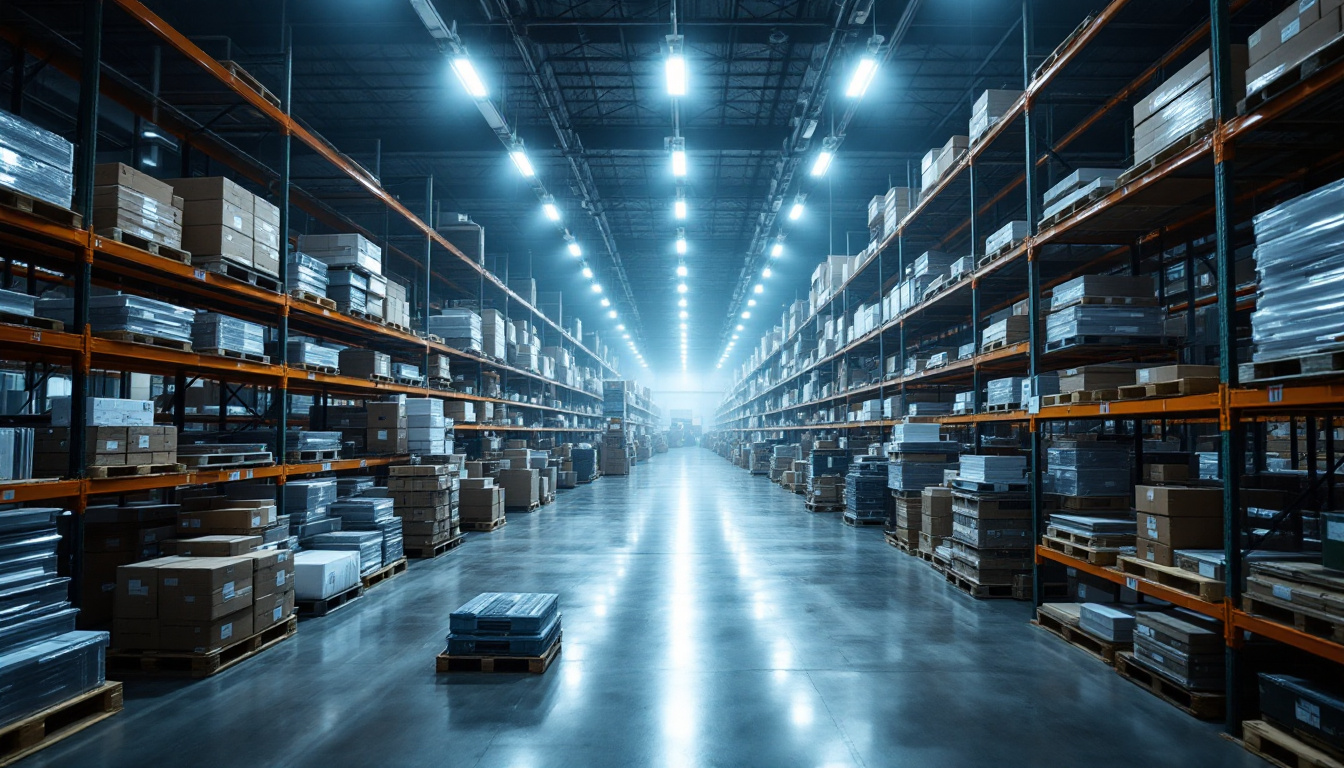

In the world of modern lighting, LED can lights have become a staple for both residential and commercial spaces. Their energy efficiency, longevity, and versatility make them an ideal choice for various applications. This article delves into the essential aspects of LED can lights, providing valuable insights for lighting contractors looking to enhance their projects.
LED can lights, also known as recessed lights, are fixtures that are installed into a hollow opening in the ceiling. They provide a sleek and unobtrusive lighting solution that can be used in a variety of settings. Understanding their components, benefits, and applications is crucial for effective installation and design.
LED can lights typically consist of several key components: the housing, the trim, and the LED module. The housing is the part that is installed in the ceiling, providing a secure structure for the light. The trim is the visible part of the fixture that can be customized in various styles and finishes. Finally, the LED module is the energy-efficient light source that provides illumination.
When selecting LED can lights, it’s essential to consider the type of housing. There are different options available, including new construction, remodel, and IC-rated housings. Each type has specific installation requirements and is suited for different applications, making it vital for contractors to choose the right one for their projects.
The advantages of LED can lights are numerous. Firstly, they are highly energy-efficient, consuming significantly less power than traditional incandescent or fluorescent lights. This efficiency translates into lower electricity bills for homeowners and businesses alike.
Moreover, LED can lights have a longer lifespan, often lasting up to 25,000 hours or more. This longevity reduces the need for frequent replacements, which can save both time and money for contractors and clients. Additionally, LED technology produces less heat, minimizing the risk of overheating and making them safer to use in various environments.
LED can lights are incredibly versatile and can be used in a wide range of applications. From residential settings to commercial spaces, their adaptability makes them a popular choice among contractors.
In residential settings, LED can lights are frequently used for general lighting, accent lighting, and task lighting. They can be installed in living rooms, kitchens, bathrooms, and hallways, providing a clean and modern aesthetic. Homeowners often appreciate the ability to adjust the brightness and color temperature of LED lights, allowing them to create the desired ambiance in their spaces.
Furthermore, recessed lighting can be used to highlight architectural features or artwork, adding depth and character to a room. The ability to install dimmers with LED can lights also enhances their functionality, providing flexibility in lighting design.
In commercial environments, LED can lights serve various purposes, from illuminating retail spaces to enhancing office environments. Their sleek design allows for seamless integration into ceilings, creating a professional appearance. In retail settings, adjustable LED can lights can be strategically placed to highlight products and create an inviting atmosphere for customers.
In office spaces, LED can lights contribute to improved productivity by providing bright, even lighting. With the option to use smart lighting controls, businesses can optimize energy use and create a comfortable working environment for employees.
Proper installation of LED can lights is crucial for ensuring optimal performance and safety. Contractors must be aware of several factors during the installation process to achieve the best results.
When planning the placement of LED can lights, it is essential to consider the intended use of the space. The distance between fixtures, the height of the ceiling, and the desired brightness all play a role in determining the optimal layout. A common rule of thumb is to space the lights approximately 4 to 6 feet apart for general lighting, but this can vary based on specific needs.
Additionally, contractors should avoid placing can lights directly over furniture or other obstructions to prevent shadows and ensure even light distribution. It’s also important to consider the direction of the light, especially in spaces where accent lighting is desired.
Electrical considerations are paramount when installing LED can lights. Ensuring that the electrical system can handle the additional load is essential for safety and functionality. Contractors should verify the wattage requirements of the LED fixtures and ensure that the circuit can accommodate them.
Furthermore, using compatible dimmer switches is crucial if dimming capabilities are desired. Not all dimmers work with LED technology, so selecting the right dimmer can prevent flickering and other issues. It’s advisable to consult the manufacturer’s specifications to ensure compatibility.
With a plethora of options available, selecting the right LED can lights for a project can be overwhelming. However, understanding the key factors can simplify the decision-making process.
Color temperature is an essential aspect to consider when choosing LED can lights. Measured in Kelvin (K), color temperature affects the mood and functionality of a space. Warmer tones (2700K–3000K) create a cozy and inviting atmosphere, making them ideal for living areas and bedrooms. In contrast, cooler tones (3500K–5000K) are better suited for workspaces and kitchens, providing a bright and energizing environment.
Contractors should discuss color temperature options with clients to ensure that the chosen lighting aligns with their preferences and the intended use of the space. Additionally, the ability to adjust color temperature with tunable white LED options can enhance flexibility in lighting design.
Brightness is another critical factor when selecting LED can lights. The brightness of a light fixture is measured in lumens, and understanding the appropriate lumen output for each application is essential. For general lighting, a range of 800 to 1600 lumens per fixture is typically recommended, depending on the size of the room and the desired level of illumination.
Contractors should consider the specific needs of each space and consult with clients to determine the right balance of brightness and comfort. Using a combination of different lumen outputs can create a layered lighting effect that enhances the overall design.
While LED can lights are known for their longevity and low maintenance requirements, proper care can further extend their lifespan and performance. Understanding maintenance best practices is essential for contractors and clients alike.
Dust and debris can accumulate on LED can lights over time, affecting their brightness and efficiency. Regular cleaning of the fixtures is recommended to maintain optimal performance. A soft, damp cloth can be used to gently wipe down the trim and lens, ensuring that the light output remains clear and unobstructed.
It’s important to turn off the power before cleaning to ensure safety. Additionally, contractors should educate clients on the importance of maintaining their lighting fixtures to prolong their lifespan and enhance their aesthetic appeal.
Monitoring the performance of LED can lights is crucial for identifying potential issues early. Contractors should encourage clients to pay attention to any flickering, dimming, or color changes in the lights. These symptoms may indicate a problem with the fixture, the electrical system, or the dimmer switch.
Addressing these issues promptly can prevent further complications and ensure the continued efficiency of the lighting system. Regular check-ups or consultations can help clients feel confident in their lighting choices and maintain a well-functioning environment.
The lighting industry is continuously evolving, and staying informed about emerging trends is essential for contractors. As technology advances, LED can lights are becoming more sophisticated, offering innovative features that enhance functionality and design.
One of the most significant trends in LED can lighting is the integration of smart technology. Smart LED can lights allow users to control their lighting through mobile apps or voice-activated devices, providing unparalleled convenience and customization. This technology enables users to adjust brightness, color temperature, and even set schedules for their lighting.
For contractors, incorporating smart lighting solutions into projects can add value and appeal to clients who seek modern, tech-savvy options. Understanding the various smart lighting systems available will be essential for successful installations in the future.
As energy efficiency becomes increasingly important, new standards and regulations are being introduced to promote sustainable lighting solutions. Contractors should stay informed about these changes to ensure compliance and provide clients with the most efficient options available.
Additionally, advancements in LED technology continue to improve energy efficiency, making it possible to achieve higher lumen outputs with lower wattage. This trend not only benefits the environment but also helps clients save on energy costs.
LED can lights are a versatile and efficient lighting solution that can enhance any space. Understanding their components, benefits, applications, and installation considerations is crucial for lighting contractors aiming to deliver exceptional results. By staying informed about trends and innovations in the industry, contractors can provide clients with the best possible lighting solutions, ensuring satisfaction and long-term performance.
As the demand for energy-efficient and aesthetically pleasing lighting continues to grow, LED can lights will remain a vital component of modern lighting design. With the right knowledge and expertise, lighting contractors can navigate this dynamic landscape and create stunning, functional spaces that meet the needs of their clients.
Ready to elevate your lighting projects with the efficiency and style of LED can lights? At LumenWholesale, we provide lighting contractors with the highest quality, spec-grade LED lighting solutions at unbeatable wholesale prices. Say goodbye to local distributor markups and hello to a vast selection of premium lighting that meets rigorous industry standards. With free shipping on bulk orders, you can stock up on superior lighting without worrying about hidden fees. Make the smart choice for your next project and experience the best value in lighting with Wholesale Lighting at the Best Value from LumenWholesale.

Discover why opting for local distributors when buying commercial lighting in bulk might not be the best choice.

Discover why purchasing troffer lights in bulk from local distributors might not be the best choice.

Discover expert tips and strategies for lighting contractors to enhance outdoor spaces with top solar lights.

Discover how a warehouse lighting calculator can revolutionize your lighting solutions, enhancing efficiency and safety.
Get notified when NEW deals are released.
Optimize your budget with wholesale discounts.
Only top-quality, specification-grade lighting products.
No additional costs at checkout - what you see is what you pay.
We understand the unique needs of contractors.